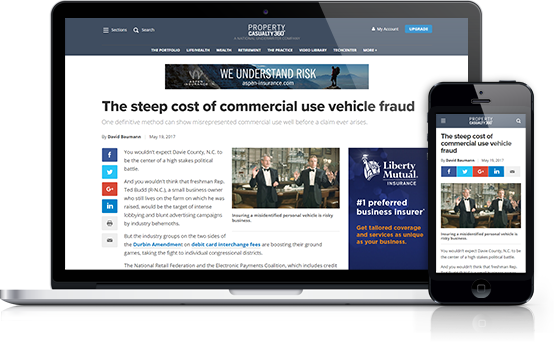Ten years ago, we were reading articles about why insurers should migrate from mainframe to client/server architecture. Today, we still are.The arguments for migration have, however, changed. Before, some selling points were GUIs and more flexible front-end toolsyou know, touchy-feely stuff. But over time, better analytic applications have become available for mainframe systems, and presentation layers have been offered to dress up even the ugliest green-screen system.Todays discussions about replacement of insurers legacy systemsboth mainframe and first-generation client/serverhave distilled to more objective analyses. Of course, the best reason for replacement still is It doesnt run any more, something we didnt think wed hear so soon after completing Y2K-driven remediation efforts on decades-old systems.Most of these [legacy] systems are patchwork quiltsislands jerry-rigged together, said Cal Braunstein, chairman/CEO and executive director of research of the Robert Frances Group. He added that this trend was, in some cases, exacerbated by companies who rushed to install some first-generation client/server systems as point departmental or line-of-business solutions. You needto find an architecture that can meet future business needs.Meeting those needs was the motivation that started the current and ongoing migration at Anthem Blue Cross and Blue Shields Midwest Division. Mergers, acquisitions, and technology components spread across three states had resulted in nine different core processing systems servicing the Midwest Divisions business. This hodgepodge seriously restricted its ability to provide effective multi-state service, create new products, and distribute workloads among staff.Anthem first looked at choosing one of its several mainframe systems to handle the entire business load, but decided none was suitable. Some were beginning to fail, others didnt have the functionality we needed to deliver across the three states, and others werent scalable, said Shirlee Cassidy, vice president of Anthem Midwests business and information systems.Anthem selected Facets by Erisco (now TriZetto), and began implementation in 1999. The two-tiered client/server system runs on a series of RS/6000 boxes. To date, Anthem has completed the migration of one million members to the new platform, has retired mainframes in Kentucky, will soon complete migration in Indiana, and recently began the process in Ohio.A patchwork can affect viability of systems beyond the pure operational level as well. At another level, working better with agents, having better information about the client, being able to service them betterthose are really the key issues, said Christine Ingold, vice president of global financial service at PeopleSoft. How to bring customer information forward so insurers have a complete view of the customer and understand the relationships among the different channels, is a challenge for carriers faced with systems with a transactional focus or with individual systems supporting different customer touchpoints.
Finding Your CenterInsurers are looking to their IT departments to develop systems and strategies that develop customer-centric packages, and thats not how they were developed; they were line-of-business packages, Braunstein said. And the problems with bringing siloed systems together to develop any sort of three-dimensional customer view are many. There are different databases with different field names of different lengths, as well as combinations of relational databases, hierarchical databases, and flat-file formats that may maintain key information in miscellaneous fields.[This] becomes very frustrating to an IT executive who said, Ive got all the damn data, lets bring it together and use it, and IT is saying, You cant, Braunstein said. And you dont want to start creating other shadow databases and synchronizing them on an ongoing basis. These are problems that make somebody finally turn around and say, I need [a new] architectureIve had my fill of this.Thats exactly what happened at Grange Insurance, headquartered in Seattle. The company had been using TFG from the Freedom Group and Encore from the (now-defunct) Heritage Computer Corporation on IBM 390 architecture, running VM and VSE.We need to be able to generate reports quickly, to slice and dice the data, and take different views and assess where the business is going, said Ralph Carlile, Granges vice president of information technology. For the mainframe, there are some tools that allow some acceleration, but theyre expensive, and the mainframe environment is just too difficult.The other driver was, as we develop and procure applications, we want to have standardized interfaces, being able to revolve around standard data schema like XML. In a mainframe environment, no one seems to be able to master how to standardize interfaces for a complete range of technologies, said Carlile.For other insurers, the key motivator behind migration to client/server is the inability of their legacy mainframe system to quickly respond to new marketing opportunities and to expand to meet the growth goals of the enterprise. Denver-based COPIC Insurance was faced with those issues in its homegrown administration systems that resided on their HP3000.We dominate the Colorado medical malpractice marketso our intention is to expand into other states and broaden our product line, said Bill Donohue, COPICs CIO and vice president of information technology. Additionally, The support for the operating system was being withdrawn by HP, so we would have had to do a migration at some point, probably this year.COPIC completed its migration to Delphi Technologys Oasis system in December 2001. Oasis handles policy, claims, financial, and risk management for COPIC, runs on Sun Solaris servers, and leverages the insurers existing database investments in and experience with Oracle.





 Copyright © 2024 ALM Global, LLC. All Rights Reserved.
Copyright © 2024 ALM Global, LLC. All Rights Reserved.






